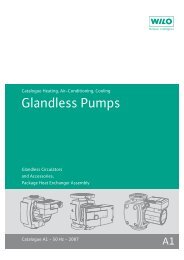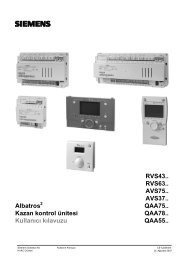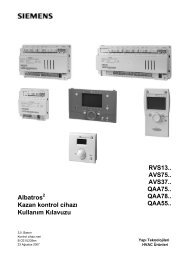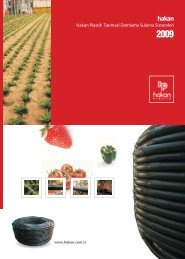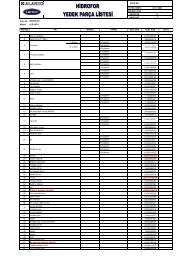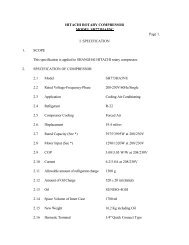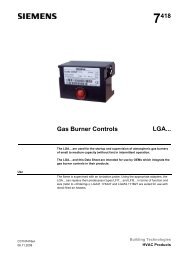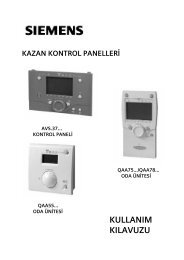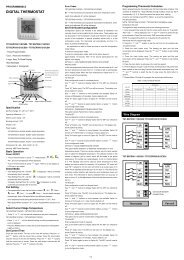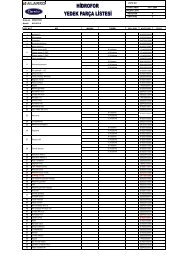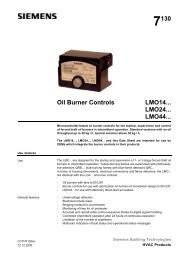A/C Scroll Compressors ZR 90 K4*.....ZR 300 KC*
A/C Scroll Compressors ZR 90 K4*.....ZR 300 KC*
A/C Scroll Compressors ZR 90 K4*.....ZR 300 KC*
Create successful ePaper yourself
Turn your PDF publications into a flip-book with our unique Google optimized e-Paper software.
glass. Cycling the compressor for a shorter time than this, for instance to maintain very tight temperature<br />
control can result in progressive loss of oil and damage to the compressor.<br />
11 Reversing Valves<br />
Since Copeland <strong>Scroll</strong> compressors have a very high volumetric efficiency, their displacements are<br />
lower than those of comparable capacity reciprocating compressors. As a result, Copeland recommends<br />
that the capacity rating on reversing valves be no more than 2 times the nominal capacity of the<br />
compressor with which it will be used. This will ensure proper operation of the reversing valve under all<br />
operating conditions.<br />
The reversing valve solenoid should be wired so that the valve does not reverse when the system is<br />
shut off by the operating thermostat in the heating or cooling mode. If the valve is allowed to reverse at<br />
system shut-off, suction and discharge pressures are reversed to the compressor. This results in pressures<br />
equalizing through the compressor which can cause the compressor to slowly rotate until the<br />
pressures equalize. This condition does not affect compressor durability but can cause unexpected<br />
sound after the compressor is turned off.<br />
12 Discharge Temperature Protection<br />
A thermistor with a nominal response temperature of 140 °C is located in the discharge port of the fixed<br />
scroll (Fig. 5). Excessive discharge temperature will cause the electronic protector module to trip (see<br />
also Section 13). The discharge gas sensor is wired in series with the motor thermistor chain.<br />
Fig. 5: Internal Discharge Temperature Protection<br />
13 Electronic Motor Protection<br />
The electronic motor protection system as used in all <strong>ZR</strong> <strong>90</strong> K3* ... <strong>ZR</strong> <strong>300</strong> <strong>KC*</strong> models is identified by<br />
a “W” as the center letter in the motor code. This system utilizes the temperature dependent resistance<br />
of thermistors (also called PTC-resistances) to read the winding temperature. A chain of four thermistors<br />
connected in series is embedded in the motor windings so that the temperature of the thermistors<br />
can follow the winding temperature with little inertia. An electronic module is required to process the resistance<br />
values and trip a control relay depending on the thermistor resistance. The characteristic gradient<br />
of a thermistor resistance curve is shown in Fig. 6. The resistance curve can be designed for different<br />
operating points, the nominal response temperature (NAT), e.g. 80°C, 100°C, 140°C, and must<br />
comply with the tolerances laid out in the standard DIN 44081.<br />
C6.2.2/0701/E 7



